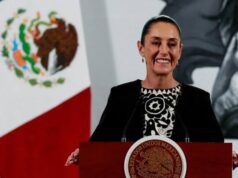How British used Indian Railways, free cups, and targeted women to make Indians tea drinkers

In ‘Taste of Time’, Mohona Kanjilal writes that tea wasn’t widely drunk in India before the British came. Then the Opium Wars with China happened.
Today, thanks to the British, India is the largest tea-producing country in the world after China. The British not only introduced tea plantations in Assam and Darjeeling but also initiated tea production in other regions in the northeast, north and south of India.
The growing British consumption of Indian tea encouraged constant expansion in the industry. The number of plantations increased. By 1888, the export of tea from Assam, Darjeeling and other mountain regions to Britain surpassed that of China. Arup K. Chatterjee writes, ‘By 1888, Indian tea exports into Britain were over 86 million pounds, exceeding China’s 80 million pounds.’ Author Erika Rappaport mentions in her book, A Thirst for Empire: How Tea Shaped the Modern World (2017) that the virtues of Indian tea were extolled in Victorian London to highlight China’s backwardness and deceit. Large volumes of adulterated Chinese tea were seized by the Customs and thrown into the Thames. In contrast, Indian teas were advertised to be more wholesome and aromatic than Chinese teas. They were declared to be purer, stronger, cheaper and better in every respect. The Darjeeling and Assam varieties were packed in ostentatious wooden boxes and sold by tea stores in London.
Back in India, the British government’s decision to introduce tea to the Indian consumer came much later. Philip Lutgendorf, in his essay ‘Making tea in India: Chai, capitalism, culture’, for the academic journal Thesis Eleven: Critical Theory and Historical Sociology, 113(1): 11–31, (December 2012) writes,
The tea[…] was intended solely for export to the West, though it passed through the port and (after 1861) the auction market of Calcutta, where a tiny fraction of the native population—principally the Anglophile bhadralok elite as well as ‘office babus’ employed by British firms— began to partake of the foreign beverage, produced by steeping in china pots and usually supplemented by hot milk (considered essential to reduce the ‘bite’ of the strong-liquoring Assam leaves) and sugar. (p. 13)
However, the fluctuating auction prices at London and the inherent difficulties of long-distance transport would occasionally make the planters and officials of the British East India Company muse over the possibility of a domestic market for the product. In 1901, Viceroy Curzon commissioned an experiment to introduce tea to Indians in select areas. But, despite modest success, the effort was abandoned in 1904. The Indian Tea Association, founded in 1881, mentioned in its annual report that despite three years of effort, the results were not good enough to indicate a promising market in India. An already well-established cultural preference for other traditional beverages like sharbats made the general public baulk at the prospect of trying it out.
Lutgendorf further mentions, ‘Advertising during the first three decades of the twentieth century […] was largely aimed at resident Britishers and the Anglophone elite who aspired to their lifestyle. It celebrated tea as a natural product of a colonized and “tamed” jungle, raised in geometrically arrayed and manicured “gardens” and picked by dark-skinned, subaltern women, who offered it at a gleaming white table to equally white consumers […]’ (pp. 13–14). As long as the financial returns from the exports were profitable, there was little inducement to pursue a domestic market that would inevitably yield a lower return.
Viceroy Curzon introduced the Tea Cess Bill in 1903 to tax the Indian tea trade, raise a fund and promote marketing. The Tea Cess Committee made sporadic and small-scale attempts in select public venues to promote tea. The first and most important place where these experiments were conducted was the Indian Railways. Not only were free cups of prepared tea distributed to the public at the Howrah railway station in Calcutta, but paper packets of tea (of such quality that would not find favour at auctions) were sold to them for one pice (a monetary unit of very low denomination in British India). The British method of brewing tea—by pouring boiled water onto the tea leaves in a china teapot, straining the liquid into a teacup after it had brewed, and adding some milk and sugar to it—was also demonstrated to the public in the tea stalls set up at the railway station at Howrah. Despite these efforts, by 1930, only a small fraction of the Indian population had developed an affinity for tea and more than 90 per cent of the crop continued to be exported.
It was only with the onset of the Great Depression, which began in 1929, that the domestic market suddenly began to seem more appealing. International tea prices dropped sharply in the early 1930s. By 1935, planters were faced with the problem of unsold, surplus tea of more than a hundred million pounds. Around this time, the Tea Cess Committee was reorganized as the Indian Tea Market Expansion Board, a precursor to the present Tea Board of India. Armed with an expanded budget, it embarked upon the largest and most aggressive marketing campaign in the history of the Indian tea industry. Lutgendorf, detailing the campaign, writes, ‘[…] “tea propagandists” were now dispatched in the hundreds, sometimes in motorized “tea vans”, equipped to dispense millions of cups of free tea and comparable numbers of “pice packets”, and to display colourful, vernacular-language signage produced by leading commercial artists’ (p. 15).
Enamel placards were put up at railway stations, markets and festivals that not only advertised tea and its health benefits but also gave detailed instructions on the correct British method of brewing it. Demonstration teams were also present at these places for the same purpose. In the 1930s and 1940s, vehicles decorated with large kettles travelled to the urban and semi-urban areas of Bengal to advertise tea and demonstrate its method of preparation. Tea was now touted as a medium for women’s awakening. It was advertised as a progressive and empowering tool for smart, modern homemakers, who understood the importance of good nutrition and domestic hygiene. The Indian Tea Market Expansion Board urged factory owners and office managers to offer afternoon tea breaks to workers that would result in a more alert and productive workforce. Keeping in tune with the spirit of the Independence movement, tea was now championed as India’s national beverage that unified the country’s diverse religious, linguistic and caste groups.
This campaign created tremendous awareness among the public about tea. The marketing strategy of offering free samples of prepared tea and low-priced single-use packages was so successful that it was adopted by private tea companies like Brooke Bond, Lipton and A. Tosh & Sons. Brooke Bond (founded in England in 1869 by Arthur Brooke) and Lipton (a British firm founded by Sir Thomas Johnstone Lipton that ventured into tea business in 1888) were the two foreign companies, which dominated the tea trade in India in the twentieth century. Brooke Bond carts would travel around Calcutta and make free tea for those who were interested in trying out the beverage. Free samples of packaged tea were also distributed by these two companies in the villages. Indian firms like A. Tosh & Sons (founded in Calcutta in 1897 by Ashutosh Ghosh and his eldest son, Prabhash Chandra Ghosh) capitalized on the ‘Be Indian, Buy Indian!’ sentiment and marketed their tea as a swadeshi product.
Unsurprisingly, with so much advertisement, drinking tea caught on with the locals of the city. Bengalis began calling it ‘cha’. On witnessing this growth in tea consumption, many local entrepreneurs ventured into the business of selling tea leaves. Inspired by the British, local vendors, armed with stoves and kettles, began selling tea on the platforms of the historic railway station at Howrah and even on the roadsides, serving the beverage in small glass tumblers. However, the majority of the locals made tea by boiling the leaves with milk, sugar and spices like pounded ginger or crushed green cardamom pods. The quantity of milk used in the preparation was far more than the British could have ever imagined. It has been difficult to trace the source from which this method of tea-making originated—whether it was the roadside or the railway platform tea vendor or the overburdened homemaker. But it horrified the British because they had failed to teach the Indians how to make the beverage the ‘correct way’.
It was only the city elite who made tea the British way and the variety that was preferred for this method was the ‘Champagne of Teas’. Since Darjeeling tea is a light-coloured and thin-bodied variety that is best taken without milk, it made no sense to boil it with milk, sugar and spices. It is too fine and upscale in quality, flavour and aroma to be treated in that manner. In contrast, Assam tea is a robust and full-bodied variety that is too strong to be taken without milk.
The prices of these teas are also another very important factor that determined the customer base. Compared to Assam tea, the Darjeeling variety is difficult to grow. The soil and climatic conditions, and the high altitude in which it is grown, give it a lot of flavour but make its growth slow. Darjeeling tea also has a shorter harvesting season and is produced in smaller quantities.
All of these factors, along with the fact that it is better in quality, have made it the more expensive one. In contrast, Assam tea has always been more accessible price-wise and the preferred variety for most who make tea the Indian way. In 1903, Brooke Bond launched Red Label in India, which is still a popular brand of Assam tea.




